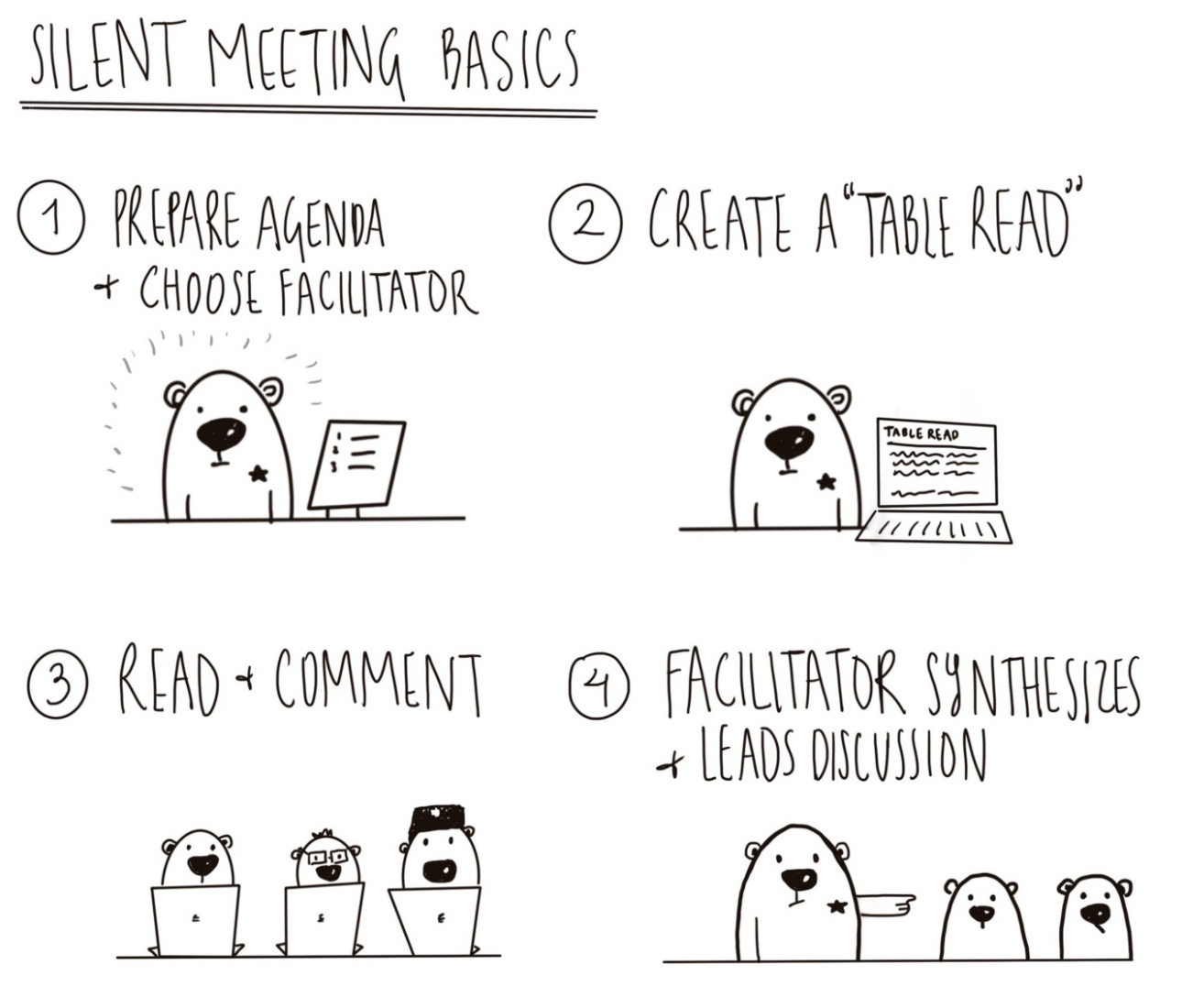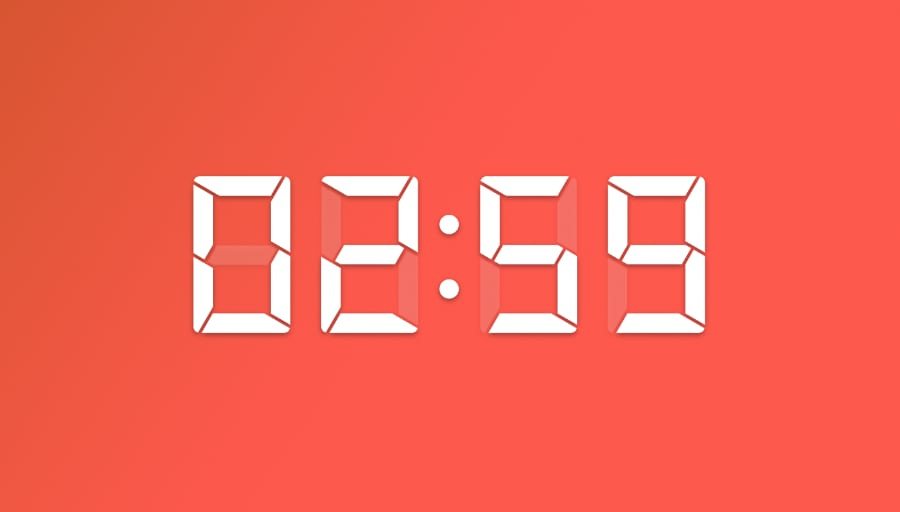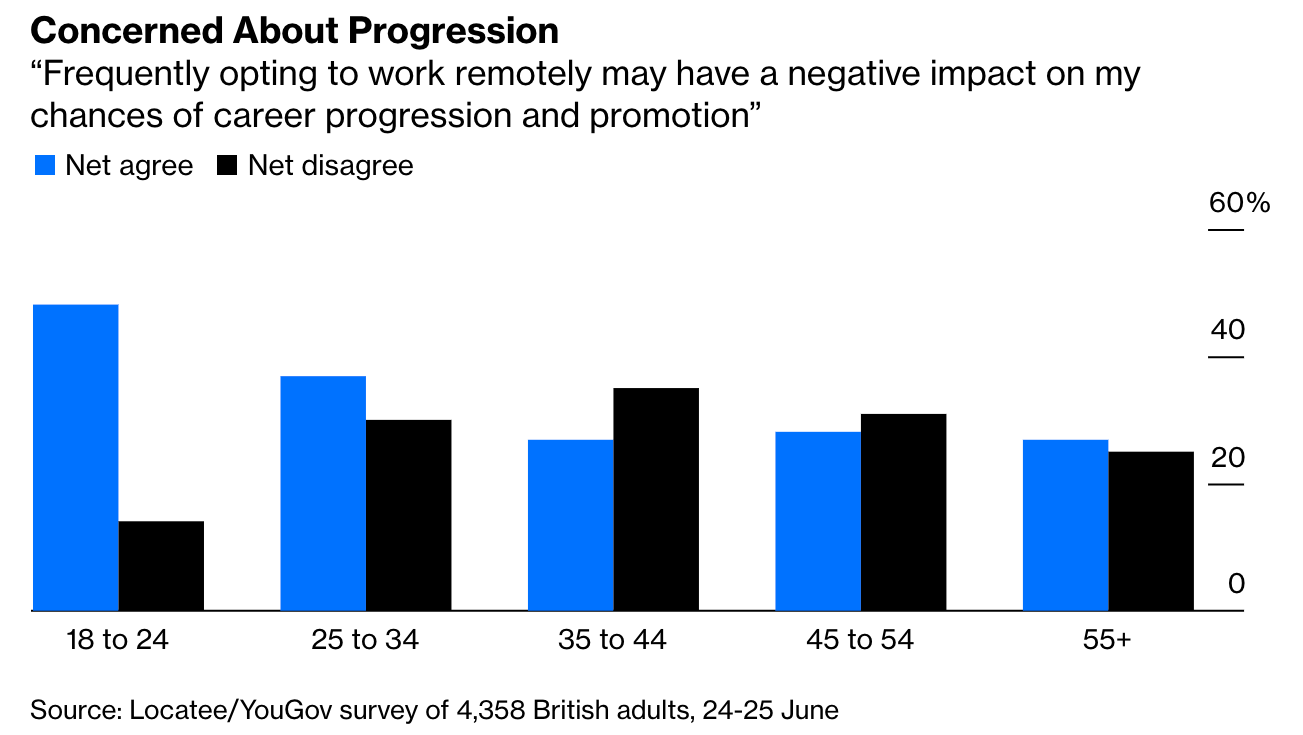Future Work/Life is a weekly newsletter that casts a positive eye to the future. I bring you interesting stories and articles, analyse industry trends and offer tips on designing a better work/life. If you enjoy reading it, please share it and subscribe!
Over the past few months, I’ve been running a workshop focused on how we approach the future of work. In one section, I ask the group to choose the topic they’d most like to focus on from a selection of four. Without fail, the top choice is ‘Reinventing Meetings’.
What does that tell us?
We all know there’s a problem with the frequency, duration and structure of meetings, but either we’re not doing anything to address it, or what we are doing hasn’t worked. Whether good or bad, meeting culture reflects the behaviours and norms of those at the top of an organisation, but the unwillingness to suffer short term pain in the interests of achieving long term gain often prevents people from acting.
As companies deliberate over whether to remain fully remote or introduce hybrid models, we’re now adding even more complexity - whether, for example, those in the office should dial in individually or do so together during a mixed-mode meeting.
So, in the interests of provoking some change, here’s an exercise you can do on your own and with your team that can help shake things up a little.
Consider each of these ideas on a scale of 1 to 10, in terms of how easy (1) or impossible (10) they would be to implement:
Scrap all meetings and start again
Drastic times call for drastic measures. We know that most meetings are a waste of time, but do you know which ones? Sometimes the only way to find out is to ditch them all and start again. Yes, a few things may temporarily fall through the cracks, but the benefits of time saved will outweigh the downside very quickly.
Meetings must be pitched
It’s far too easy to resort to a meeting when a short message or quick one-to-one conversation will do. Equally, there are times when it is worthwhile for people to sit (or preferably stand) across from each other and talk through a problem. In this case, I’d ensure the reasons are clearly explained – why this meeting, at this time, with these people, for this duration?
All meetings must have an agenda of questions
We’ve all sat in long meandering meetings without any agenda. Yet even when there is one, it’s possible to feel like there’s no defined endpoint. If you frame a series of questions, you’re more likely to stay on topic, and you’ll know when you’re done – once all the questions are answered. If that’s 10 minutes before the scheduled end time, even better.
Narrative meetings
You’ve probably heard about Amazon’s success with narrative (or sometimes known as silent) meetings. The first part is spent reading a detailed document outlining the background information and insights that will allow the team to make a decision in the meeting. Simply put, it’s much quicker to read than for someone to present ideas, while a narrative structure offers more opportunity to articulate a case supported by evidence.
[David Gasca]
Most junior member speaks first
There’s nothing worse than the boss calling a meeting to hold court on without any opportunity for contributions from the team. Apart from, perhaps, when the pretence is made that meetings are a forum for debate and constructive criticism. The reality is that even in the best cultures, it can be difficult to disagree with more senior team members. Allowing more junior staff to speak first can create psychological safety and encourage a more innovative culture of positive accountability.
Time cushion between meetings
If you’ve still not worked out how to customise your calendar invitations to allow some time between meetings, then please make that the first thing you do after reading this article - click on these links to find out how to do it for Outlook and Google. I still speak to people who have back-to-back video meetings all day, and the truth is that it’s no better when they’re in the office - this is a terrible way to work. For everyone’s sanity, we need some time to pause and reset throughout the day.
Calculate the financial value of the meeting
Sometimes, there’s nothing that focuses the mind quite like money. I’ve come across two-hour client calls on which up to 25 senior people attend. Most of the time, the same handful of people speak, repeating information that already exists within reports. The simplest way I’ve found to demonstrate the scale of the problem is to work out how much this time costs. Let’s assume the average hourly cost per person is £40, that’s £2,000 per meeting, not including the preparation and follow-up on either side. Enough said.
Countdown timer
My time is very important to me. I’m sure you feel the same. Often, my diary is like a game of Tetris, carefully positioning meetings and tasks into the day to allow the time for me to cover everything that needs to get done. So, if a meeting is in for 30 minutes, I can really do without it lasting 35 minutes - particularly when someone else is waiting for me on another call. It’s stressful and distracting. A countdown timer focuses the mind and keeps everyone succinct and to the point.
Hard stop
If all else fails and some people can’t help but overrun, then just end the call. Brutal, but everyone soon learns the score.
One last thing – I’ve tested all of these ideas. Some of them work immediately and have stuck. Some have been effective at changing behaviour but are only required temporarily. Some have pissed people off, but most have resulted in an overwhelmingly positive outcome, freed up people’s time and were worth the short-term pain.
Critically, after discussing these ideas in the workshops, everyone seems to agree. What at first appears impossible quickly becomes a potential tool in the battle to fix meetings.
Try them out, and let me know if you have any other bright ideas.
Have a great week.
Ollie
Any Other Business:
One benefit of congregating in the office is that younger, less experienced team members have the chance to learn from more senior colleagues. Of course, many also understand the value to their careers, of proximity to their bosses, as this report in Bloomberg makes clear. Over the past couple of weeks, I’ve spoken to numerous business leaders who have observed this trend, including the Managing Director of one of the UK’s best known retailers, who recognises that while the priority of some of the junior team members is having a dedicated workspace, being one of the few in the office at the same time as the management team hasn’t done them any harm either.
According to my recent podcast guest, Dror Poleg, a shift to remote work will create a split between those who are indispensable and can charge a premium for their skills and expertise and those whose jobs will move to markets with lower wages. I’ve already seen some trends towards this in recruitment strategies, but as the challenge of adapting to a fully distributed workforce is new to many companies, it will be interesting to see whether there’s a temporary retraction. In the long term, though, I can’t help but agree with Dror. Read his article HERE.
You’ll remember that I wrote about my interview with Dror in FWL45, in which I discussed the emergence of the Axie Infinity, a game that uses NFTs to reward players the more they play, and its growth hasn’t slowed since then. This week it became the first NFT game to hit $1 billion in sales. You can read more about the story HERE.
Last week I wrote about creating boundaries between the workday and the rest of life. Anyone who knows me or has worked with me understands how much I think about this stuff, so it’s always interesting to hear the ideas of others on how we mitigate the risk of being ‘always-on’. This article in HBR by Arjun Narayan, Rohan Narayana Murty, Rajath B. Das and Scott Duke Kominers makes some useful observations about when and how individuals and teams work best.
As I regularly reference, there seems to be some momentum gathering behind the idea of a four-day working week, and here's another take on it from Yes Magazine.
And finally, a healthy dose of optimism ahead of the new week. Kevin Kelly is the founder of Wired magazine, an author, and the originator of the 1,000 true fans model about which I’ve written several times. In this article for Warp News, he outlines both a general case for optimism at any time, as well as a specific “handful of forces at work in the world that make specific cases for optimism at this particular time, in 2021.” Enjoy.








